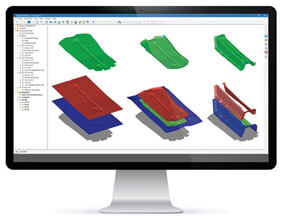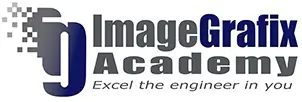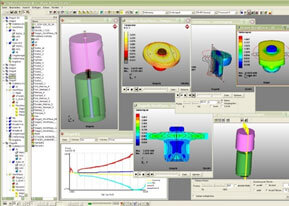
Program Objective
This course will provide examples of how to determine the material requirements and the preferred blank shapes for outer and inner panels. Students will learn the fundamentals for estimating the Material Blank Requirements (MUL), Tooling Costs and Reducing Engineering Changes due to Formability issues for stampings (DFM). Methods and formulas for determining piece price and tooling costs will be provided. This course will also cover how to review, evaluate, and estimate typical Engineering Changes.
Course Objective
In this course, you will learn about:
- Metal Forming Theory and Formability Concepts.
- Geometry, Process Setup, Forming, and Springback Workbenches.
- Using workbenches to complete DFM Analysis, Countermeasures, and the DFM Gate Process.
- Expand on the existing knowledge from TCE2 and TCE3:
- To apply it to the Line Die Plan and the Prog Die Process Workbenches
(to determine the tooling cost for stamping). - To create a first form geometry using the 3D Addendum Workbench.
- To apply it to the Line Die Plan and the Prog Die Process Workbenches
- Utilizing the Geometry, Process Setup, Forming, Blank Definition, Nesting, Stretch Web, and Layout Editing Workbenches to determine the blank shape, nesting configuration, and material cost of a part.

Program Highlights
- Interactive content
- Hands on workshops
Software Trained
Using Hexagon D&E Solutions
40 Hours
- Simufact Forming Hub
- Simufact Forming Heat Treatment
- Simufact Forming Sheet Metal
- Simufact Forming Die Analysis
- Simufact Forming Parallel Core
- Simufact Welding Meshing Hub
- Simufact Welding Resistance Spot Welding
- Simufact Welding Advanced Material Modeling Solver
- Simufact Welding Direct Energy Deposition
Who Should Attend
- B.E. / B.Tech / Diploma in Mechanical / Automotive Engineering
- Final year B.E. / B.Tech / Diploma students



